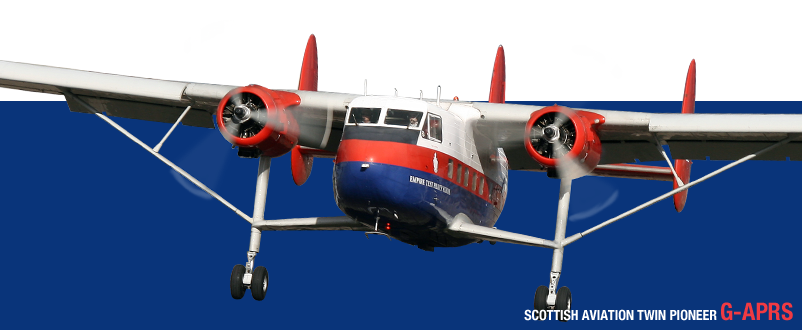
G-AMSV Returns to Coventry
An old friend returned to Coventry yesterday when G-AMSV, in her striking Indian Air force livery, landed here for extensive maintenance by our engineers. Sierra Victor was part of the Air Altantique fleet here for many years. She'll...
Baginton Air Pageant
The initial details for the Baginton Air Pageant are up on the website! As we don't have the space for a full-on air show attracting 20,000 or so people, we're aiming for low-key, themed days like this. A couple of thousand people,...
Newquay Pleasure flights
We promised we'd be back to fly in Cornwall, and here we are. We'll be heading south with a Rapide and Chipmunk to spend a week at Newquay from 25th July, with a further visit planned in August. The flights are bookable in the normal...
New Dakota Book
Geoff Jones just told me that his new book on the DC-3, released to celebrate the 80th anniversary of the Dak's appearance, is now available. The cover sports a lovely shot of G-ANAF, shot by Simon Westwood before her radome goiter was...
Nimrod Engine Run
We've just confirmed plans by NPT to run all four of the Nimrod's Rolls-Royce Speys on Saturday 9th May. We expect the thunder to start just after lunchtime. Come along and enjoy some audio power - and please dip into your pockets...


Developed from the single-engined Scottish Aviation Pioneer, the Twin Pioneer was designed with both military and civil operators in mind.
Powered by a pair of Alvis Leonides engines the prototype – soon dubbed the ‘Twin Pin’ – made its maiden flight on June 25, 1955. Its incredibly short take off and landing roll made it an obvious choice for the military and the Royal Air Force ordered 39 examples, many of which served with distinction in Aden and Borneo. Other air forces to operate the type included Malyasia and Nepal.
The military version of the aircraft had the capability to carry external stores, such as bombs, under the stub wing connecting the fuselage to the undercarriage. This small wing also generated extra lift and it was this, added to the powerful trailing edge wing flaps and leading edge slats that helped give the aircraft such outstanding short-field performance. The fixed undercarriage is massively built, with long-travel oleo suspension to absorb the thumps and bumps of unprepared landing strips.
The prototype first flew at Prestwick in June 1955. It instantly impressed with its good manners and exceptional STOL (Short take-off and landing) capabilities. Here was a ruggedly built, simple to maintain aircraft with a large, rectangular load space and excellent lifting power.
Orders were placed by the RAF and several other air forces, including the Royal Malaysian Air Force who took delivery of the first two Twin-Pins to roll off the line. It was a versatile workhorse; its lifting power allowed it to carry bombs under the lower stub wings, while its large, uncluttered load space made it ideal for cargo or troop movement.
The Twin Pioneer remained in daily service until returement in 1968. Altogether, 87 were built.
Many civilian operators bought the Twin Pin for similar reasons. Able to get in and out of jungle clearings and shrug off rough terrain it was perfect for transporting freight and people to and from remote locations. The Eagle comic celebrated it with a Christmas-edition cutaway entitled "Christmas Supplies for the Jungle".
Ironically, it was the Twin Pioneer's ruggedness that was to prove its nemesis. It was tough, but not invulnerable, and years of use in rough conditions, often with little maintenance, slowly eroded its numbers until G-APRS is now the world's only (unfortunately theorretically at present) flyable example.

